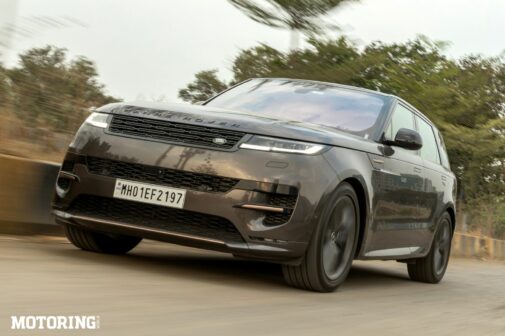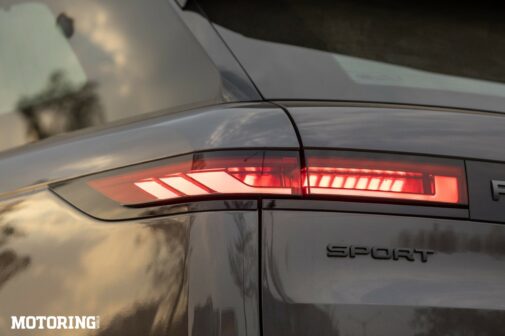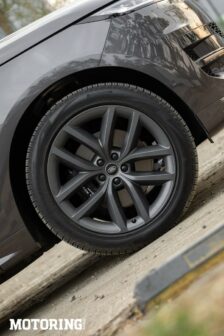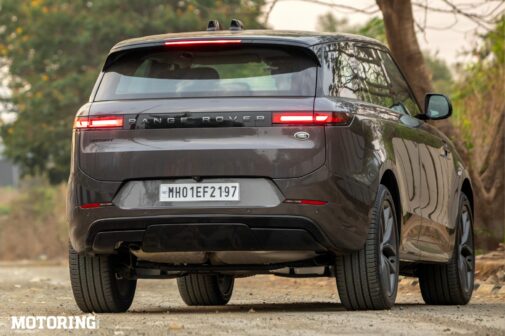The third-gen Range Rover Sport has arrived with the same pomp and splendour Land Rover usually manages — the ‘affordable’ Rangie’s pricing starts at an eye-watering Rs 1.64 crore (ex-showroom). The all-new SUV is larger, is said to be more comfortable, and is also said to actually mean that ‘Sport’ suffix, and we’re going to find out just how much of all of that is true.
The new Range Rover Sport is underpinned by the same platform as the full-size Range Rover, so you get, figuratively, acres of space — compared to the last-gen model, it is 67 mm longer and 17 mm higher, while the wheelbase has been extended by 74 mm. It definitely looks the part of a big luxury SUV, and this time around, the styling is quite distinctive. You’re not going to confuse this one on the road for anything else. The sharply raked A- and D-pillars help identify it as a Sport and the design is definitely eye-catching.
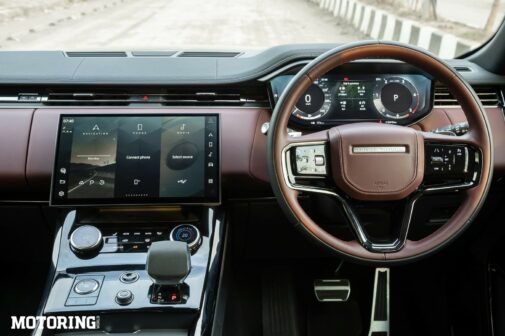
There’s none of that overt use of chrome, or those oversized grilles that are now so prevalent. Instead, you get minimalist details and subtle cues that gel beautifully together. The rear end is almost as glamorous as the front, thanks to those slim, horizontal, wraparound tail-lamps. The door handles that sit flush with the body, and only pop out on unlocking, are a nice touch, but can get a little confusing to use, albeit only initially. Special mention should be made of those sporty, blacked-out 22-inch alloys — they really round the package off quite well.
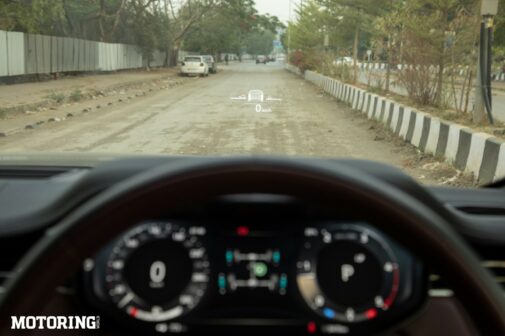
Step into the new Sport (it is a bit of a step as there are any floorboards or steps to get in), and if you’ve spent some time in the full-sized Rangie, you’ll find yourself in very familiar surroundings. The interior is a massive step up compared to the outgoing model. It’s seriously plush and modern, while maintaining some of that old-school charm we have come to expect from this Range Rover. Both, the 13.1-inch touchscreen infotainment display and the 13.7-inch digital instrument cluster, look and feel upmarket, and have aesthetically pleasing operating software, though the former is comparatively slow to respond to inputs. I’m not a fan of button-heavy steerings, but the ease and accessibility of the Sport’s new three-spoke steering-wheel buttons make it nice to use.
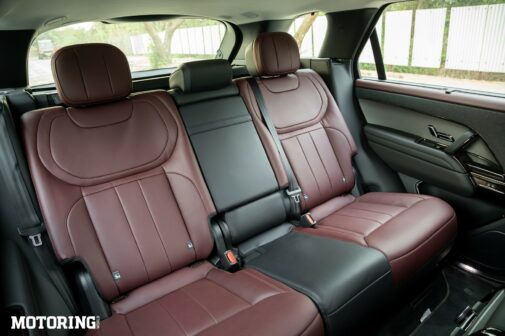
The view out the driver’s is excellent — not quite as low-slung as some ‘sporty’ SUVs out there — and the quality of materials is almost Range Rover level. You really don’t feel like you’ve got the cheaper Rangie, and even the mid-spec HSE Dynamic variant you see here is quite well-kitted. Feature highlights include digital LED headlights, air suspension, soft close doors, a digital rear view mirror, head-up display, front seats with heating, ventilation and massage functions, heated and ventilated rear seats, and quite a bit more. You also get certain ADAS functions, such as adaptive cruise control and lane keep assist, which work well enough in our conditions.
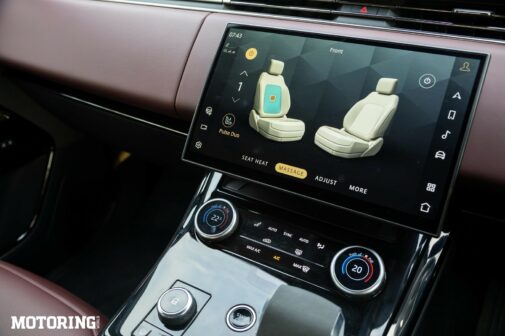
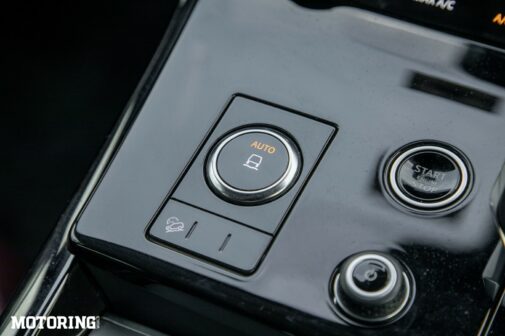
The rear seat experience maintains the status quo — it’s not quite as adjustable as the Range Rover, but thanks to the space on the inside, the rear bench that can adjust up to 37 degrees, and the overall levels of comfort, few will have any real reason to complain. That the air suspension can be lowered to better the access height is a nice function, though the elderly among us will still feel it’s a climb to get in. The rear suspension also lowers to ease loading luggage, and the boot itself is cavernous, and can be expanded (by folding the rear seats) at the touch of a button. Manually adjustable sun blinds for the rear passengers at this price point is a bit of a disappointment. On the other hand, that superb 23-speaker Meridian sound system is absolutely brilliant.
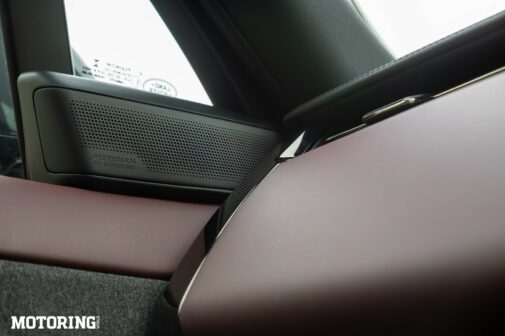
Land Rover offers a pair of mild-hybrid 3.0-litre six-cylinder engine options with the Range Rover Sport — the P400 petrol, which gets 394 bhp and 56 kgm of torque, and the D350 diesel, which gets 346 bhp and 71.3 kgm of torque. The diesel is the one you see on these pages, and it almost delivers on that sporty promise. In Eco mode, the Range Rover Sport does its best to emulate a luxury barge — there’s no alacrity to its movement, but nonetheless, you’re in for an extremely comfortable drive.
Dynamic mode helps the Sport live up to its name, and it really does extract the best out of this engine, and the 8-speed ZF-sourced automatic is brilliant in this regard, too. For a diesel, this six-pot is quite free-revving and provides more than enough oomph to lug around this over-two-tonne SUV. It isn’t quite as dynamic on a set of twisties as you’d like, especially with the ‘Sport’ in the name, but it’s not scarily bad either. Grip can be felt at all times, and the body roll is also nicely obtained for something this large.
Land Rover’s Terrain Response 2 off-road tech, as always, works superbly when the going gets rough. The Range Rover Sport may not be an all-out off-roader in the lines of the Defender, but other than getting some scratches on the paint, you won’t be afraid of much when you need to take this beast off-roading. It’ll even water wade with the best (it’s rated at 900 mm), and at its highest setting, you’ll get over 280 mm of ground clearance. What also helps is the excellent 360-degree camera.
So, should you be spending your hard-earned dough on the new Range Rover Sport? Look at it from the perspectives of rivals in the segment, and the SPort comes across as expensive. However, look at it as a more approachable Rangie, and you’ll be more than satisfied with the Range Rover Sport. And that’s what makes it a good buy.
AUTODATA
Range Rover Sport HSE DynamicPOWERTRAIN
Displacement:
Max Power:
Max Torque:
Transmission:
2997cc, I6, diesel
346 bhp@4000 rpm
71.3 kgm@1500-3000 rpm
8AT
TYRES
F/R: 185/55 R16
DIMENSIONS
L/W/H (mm):
Wheelbase:
Ground Clearance:
Kerb Weight:
Fuel Capacity:
4946/2047/1820
2997 mm
NA
2435 kg
80 litres
PRICE
Rs 1.71 crore (ex-showroom, India)










